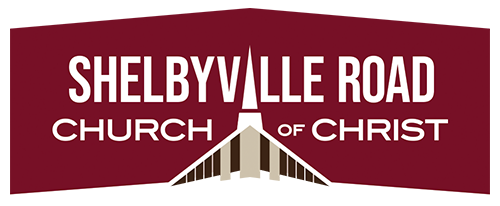BEN F. VICK, JR.
Zechariah was one of the postexilic prophets along with Haggai and Malachi. Haggai and Zechariah were contemporaries. The book of Zechariah, in my judgment, is one of the most difficult books of the Minor Prophets to understand. This does not mean it cannot be understood. Zechariah used apocalyptic language. He used figures and symbols. There are eight visions in the book. Other than Isaiah, Zechariah wrote more about the coming of the Messiah than any other prophet. Chapters 1-8 tell of Zechariah’s night visions, relating to the rebuilding of the temple. Chapters 9-14 look more to the coming of the Messiah.
My once familiar friend who swallowed the A.D.70 theory and has been regurgitating the teachings of Max King since, said of me: “Ben has never seriously considered that Matthew 24:36 is the fulfillment of Zechariah 14:7, and Zechariah 12-14 is unmistakably referring to the Destruction (sic) of Jerusalem in 70 A.D.” (sic). There is so much wrong with this compound sentence, it is difficult to know where to begin. First, to say that I have “never seriously considered Matthew 24:36 is the fulfillment of Zechariah 14:7…” is false. The problem with my former friend is that he does not listen. Second, the prophet said of that day, “But it shall be one day which shall be known to the Lord….” However, Jesus said of his second coming that he did not know when it would be. Zechariah was referring to the destruction of Jerusalem, but Jesus was referring to his second coming. Two different events. The former has happened; the latter has not. Third, not all in Zechariah chapters 12-14 refer to the destruction of Jerusalem. Note the following prophecies related to the Lord’s first coming and his death:
1. Zechariah 12:10 – “they shall look upon me whom they have pierced” (John 19:37).
2. Zechariah 13:1 – “In that day there shall be a fountain opened to the house of David and to the inhabitants of Jerusalem for sin and for uncleanness.” A reference to the offering of salvation from sin by the precious blood of Christ. (Matt. 26:28; Heb.9:22).
3. Zechariah 13:6 – “What are these wounds in thine hands? Then he shall answer, Those with which I was wounded in the house of my friends.” (John 20:24-29).
4. Zechariah 13:7 – “Smite the shepherd, and the sheep shall be scattered” (Matt. 26:31; Mark 14:50).
Further Thoughts on Zechariah 14
1. “Behold, the day of the Lord cometh, And thy spoil shall be divided in the midst of thee.” (Zech. 14:1). “The day of the Lord” here refers to the destruction of Jerusalem just as the “day of the Lord” in Isaiah 13:9 is a reference to the destruction of Babylon. The expression does not mean the second coming of Christ in either of these verses.
2. “For I will gather all nations against Jerusalem to battle; And the city shall be taken, and the houses rifled, and the women ravished; And half of the city shall go forth into captivity, And the residue of the people shall not be cut off from the city. Then shall the Lord go forth, and fight against those nations, As when he fought in the day of battle.” (Zech. 14:2-3). According to the historical account of Josephus and the writings of Pliny, Horne, and Clarke these verses give an accurate account of the destruction of Jerusalem. The “nations” here represented the Roman army made up of men from various nations. The army was led by Titus in A.D 70 in besieging Jerusalem.
3. “And his feet shall stand in that day upon the mount of Olives, Which is before Jerusalem on the east, And the mount of Olives shall cleave in the midst thereof toward the east and toward the west, And there shall be a very great valley; And half of the mountain shall remove toward the north, And half of it toward the south.” (Zech. 14:4). “His feet shall stand in that day upon the mount of Olives” refers to Titus, the Roman General, who stood on the Mt. of Olives when Jerusalem was under attack in A.D. 70. This verse prophesies that the army, as it views the city of Jerusalem, will surround it. Josephus, the Jewish historian, was an eyewitness to this event. Titus stood upon Scopus, the northern peak of the Mount of Olives, as he viewed the city. (The Complete Works of Flavius Josephus, Wars of the Jews, Book V, Chapter II, ¶ 3.)
To misapply Zechariah 14 to the Lord’s second coming contradicts the truth and the facts. In my judgment, the chapter in the main refers to the destruction of Jerusalem, but even if it did not, it does not have reference to the second coming of Christ. Such would contradict the truth and the facts.
1. The earth will be burned up when the Lord comes again (2 Peter 3:10).
2. There will be no battle when Christ returns (1 Cor. 15:50-52; Matt. 25:31-46; John 5:28-29).
3. When Christ comes the second time, he will deliver up (surrender or yield up) the kingdom to the Father. He will not become King. He is King now (1 Cor. 15:24-26; Zech. 14:9;1 Tim 6:15).
4. We shall not know Christ after the flesh. Thus, “feet” in 14:4 cannot be taken literally. Even if one were to grant that this highly figurative passage (Zechariah 14) was not a reference to the destruction of Jerusalem, it most definitely cannot be applied to the second coming of Christ in A.D. 70.
5. The facts are that Christ did not come personally in A.D. 70. He is still reigning as King of kings. There has been no last day as of yet. The final judgment has not come. People are still marrying and giving in marriage. The Lord’s supper is still being taken. The resurrection has not occurred.
